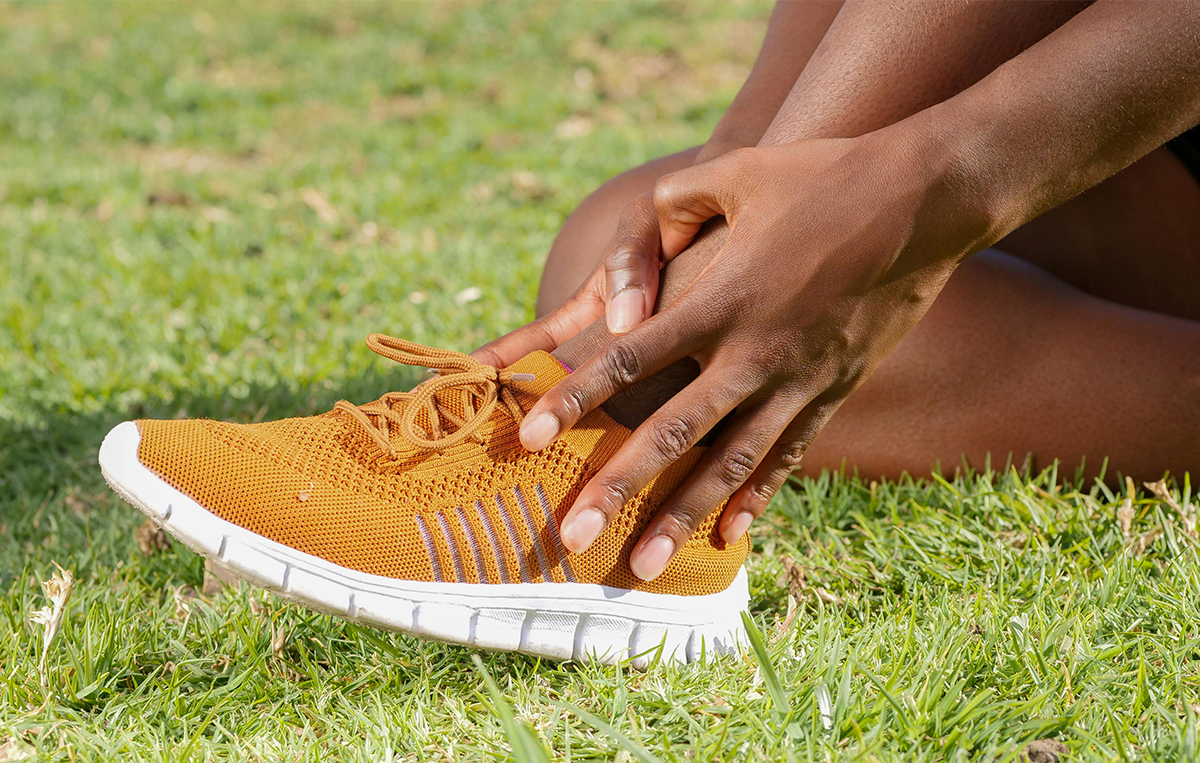What is Achilles tendonitis?
The Achilles tendon connects the large calf muscles to the heel and provides the power in the push off when walking and running. It is estimated that Achilles Tendonitis accounts for around 10% of all running injuries.
Click HERE to book your targeted leg and foot treatment
Achilles Tendonitis can be either acute, meaning occurring over a period of a few days, following an increase in training, or chronic which occurs over a longer period of time. In addition to being either chronic or acute, the condition can also be either at the attachment point to the heel or in the mid-portion of the tendon (typically around 4cm above the heel). Healing of the Achilles tendon is often slow, due to its poor blood supply.
Acute tendonitis:
- Gradual onset of pain over a period of days
- Pain at the onset of exercise which fades as the exercise progresses.
- Pain eases with rest.
- Tenderness on palpation.
Chronic Achilles tendonitis may follow on from acute tendonitis if it goes untreated or is not allow sufficient rest. Chronic Achilles tendonitis is a difficult condition to treat, particularly in older athletes who appear to suffer more often.
Chronic tendonitis:
- Gradual onset of pain over a period of weeks, or even months.
- Pain with all exercise, which is constant throughout.
- Pain in the tendon when walking especially up hill or up stairs.
- Pain and stiffness in the Achilles tendon especially in the morning or after rest.
- There may be nodules or lumps in the Achilles tendon, particularly 2-4cm above the heel.
- Tenderness on palpation.
- Swelling or thickening over the Achilles tendon.
- There may be redness over the skin.
- You can sometimes feel a creaking when you press your fingers into the tendon and move the ankle.
Causes of Achilles Tendonitis
- Achilles tendonitis is an overuse injury. Too much too soon is the basic cause of overuse injuries, however other factors can contribute to developing the condition.
- Increase in activity (either distance, speed or hills).
- Less recovery time between activities.
- Change of footwear or training surface.
- Weak calf muscles.
REMEMBER ACUTE IS THE FIRST FEW WEEKS. IF YOU IGNORE THE SIGNS YOU WILL TURN THIS INTO A LONG TERM ISSUE………..
Click HERE to book your bespoke tendonitis treatment
Other causes
- Decreased range of motion at the ankle joint, usually cause by tight calf muscles.
- Running up hills – the Achilles tendon has to stretch more than normal on every stride. This is fine for a while but will mean the tendon will fatigue sooner than normal.
- Over-pronation or feet which roll in when running can place an increased strain on the Achilles tendon. As the foot rolls in (flattens) the lower leg also rotates inwards which places twisting stresses on the tendon.
- Wearing high heels constantly shortens the tendon and calf muscles. When exercising in flat running shoes, the tendon is stretched beyond its normal range which places an ‘abnormal’ strain on the tendon
What Do You Do?
The best advice is not to get it in the first place. However, if you are seeing signs and symptoms you should do the following:
- Rest and apply cold therapy.
- Wear a heel pad to raise the heel and take some of the strain off the Achilles tendon. This should only be a temporary measure while the Achilles tendon is healing.
- Make sure you have the correct running shoes for your foot and type of sport.
- Regular massage & an injury management programme.
How often should I get a massage?
- Runners of 30+ miles weekly sessions initially, then every fortnightly maintenance sessions.
- Runners of less than 30 miles a week- monthly maintenance sessions
Stretch For Achiles Tendonitis…. CLICK HERE.




